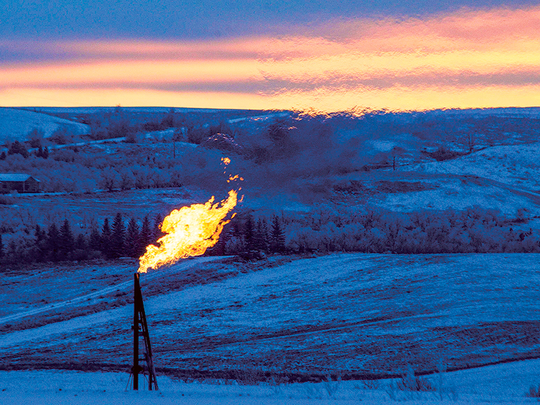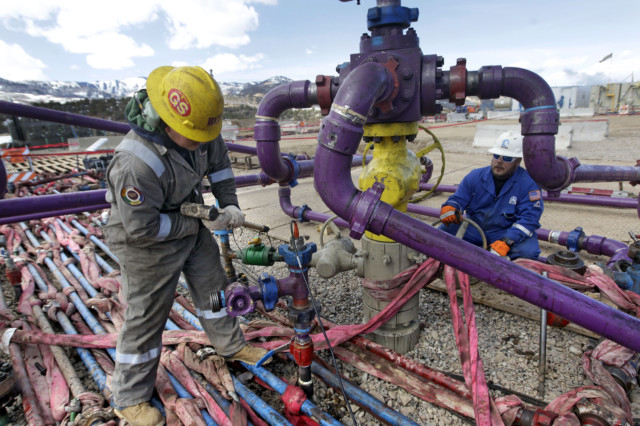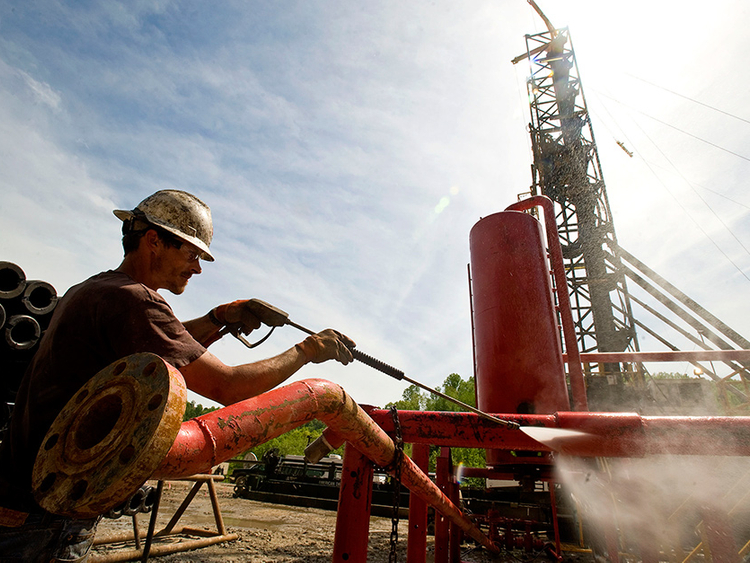
Natural gas trading is facing serious challenges. This came after the US administration recently increased shale gas production with the aim to tap the booming demand from Asia, one of the prime end-user markets along with Europe.
The US move will have significant consequences on gas prices in global markets.
It is over the past decade that the US started shale gas production and exported it to Western Europe.
READ MORE:
Major natural gas reserve found in Indian Ocean
476 vehicles in UAE converted to operate on natgas
UAE targets at least 24% renewable energy by 2021
This resulted in a drastic fall in prices from $11 to just $3, causing a significant loss to exporters such as Russia, Iran, Qatar and Algeria, the world’s biggest natural gas exporters.
Market shift
The shift by the US towards Asian markets, especially Japan, South Korea and India, is a dramatic change in terms of the sources of supply for these markets on the one hand and prices on other, given that both Qatar and Iran depend on them.
It is true that Asian markets’ traditional supplies come through medium and long- term contracts.
Nevertheless, having an alternative supplier with prices less than that stated in these contracts will lead to a decline in prices.
This, in turn, will affect the long-term contracts and lead to a sharp decline in revenues generated by gas exporting countries.
In fact, the extent of the effect will vary according to the means and ways of transporting gas. It is well known that the cost of transport plays a major role in the cost of gas delivery to the final consumer.
In cases like that of Qatar and Iran, there will be major impact, given that both depend on gas liquefaction and transporting it in giant tankers to consumer markets.
Russia will suffer less because it mainly depends on exporting gas through pipelines, especially to European buyers.
Challenges
The natural gas trade will face challenges from other countries. Recently, Saudi Aramco announced plans to increase gas production.
Amin Al Nasser, CEO of Aramco, said the company will double production to 23 billion cubic feet per day over the next 10 years. It also plans to expand its gas pipeline transmission system.
This provides great potential for the establishment of a GCC-wide natural gas network, especially since Abu Dhabi has the potential to develop gas production further, and which will be a big boost to self-sufficiency of industrial development.
GCC countries have the potential to contribute to the development of gas deposits abroad, whereby Russia offered Aramco a project to produce gas in the North Pole.
Russia’s Energy Minister Alexander Novak said that energy cooperation with Saudi Arabia is a priority for his country. The UAE can also contribute to Russian gas production in the North Pole.
China and India are expected to begin producing shale gas after production costs declined significantly, as these countries have considerable reserves of shale gas.
This clearly indicates that the production and trade of natural gas will change dramatically in the next 10 years, with the emergence of other producers, thereby increasing competition and which could affect prices.
Price decline seen
Prices are expected to decline in the coming years, given that preference will be for piped gas exporters, which explains the rush to build new pipelines in various parts of the world.
The result of such an approach will be positive, as it would reduce the current monopoly of gas trade by a handful of countries.
There are also important environmental aspects of such as approach, as natural gas is a relatively clean source of energy, in addition to geopolitical consequences that are no less important.
Dr Mohammad Al Asoomi is a UAE economic expert and specialist in economic and social development in the UAE and the GCC countries.














